As a Range Safety Officer, I see people every day show up at the range without essential gear or supplies. We try to anticipate this and provide safety gear, tape, staples, and targets. As much as I would like to, I can’t provide that special caliber ammo for your grandfathers hunting rifle or a magazine for your antique pistol.
It has happened to me more than I would like to admit. I rush packing for the range and something essential ends up left behind in the garage. Sometimes a roll of tape or a side trip to the local gun store can solve the problem. I hate that.
Start with an idea of what you want to accomplish. If you know what resources the range has available, you can plan what you need and make sure you have a fun, productive day. You want to spend range time shooting, not improvising workarounds for targets. A little planning can save you a lot of time and money.
Visualize what is going to happen and what you need. If you are bringing friends, make sure they have eye and ear protection and know what to wear for the conditions on the range. Flipflops and low cut tops don’t make for a great shooting experience.
Something to Shoot
This seems basic but start by making sure that you have the guns, magazines, and ammunition that you need to accomplish your goals. I have arrived at the range to find that the gun case did not have the gun I expected in it. I have found that I did not have the correct magazines for a gun I intended to shoot. Forgot the ammo can? Yep, that too.

As a volunteer RSO at my local range, I frequently see shooters show up with every gun they own. They often want to put fifteen guns on the shooting bench which causes dangerous clutter. They normally don’t shoot everything they bring and often lack correct ammunition for everything. Bring what you can shoot and uncase it as you use it. You can come back another day with your other guns.
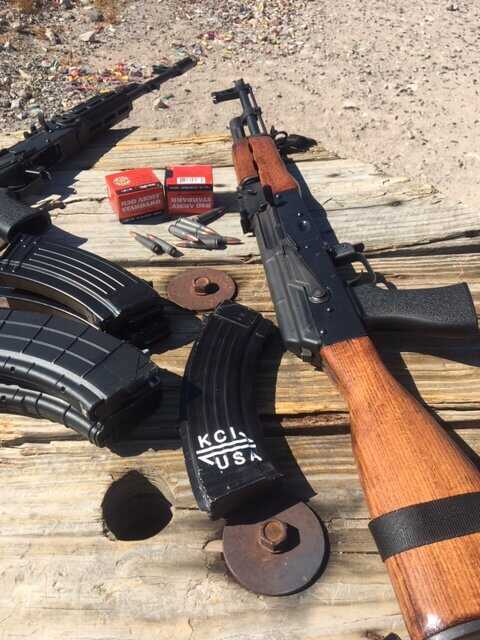
If possible, buy ammunition ahead of time, prices are better in bulk and availability is assured. “Stopping by the Walmart” on the way to the range may not yield the results you expect.

I have arrived at the range to find I brought the wrong ammo can containing the wrong ammo. You are a grizzled shooting veteran, so you know what you need. Check it before you go.
I like GI ammo cans. They are waterproof and take incredible punishment to protect their contents. But they are heavy, can damage car interiors, and they will rust.

Plastic ammo cans are not nearly as strong but they are light and don’t damage the things they are placed on or around. I prefer plastic for ready ammo on the range. Mark them so you don’t have to open them to see what’s inside.
Stuff at Which to Shoot
I have seen many people show up to the range without any targets. Many ranges have stands available, but most don’t provide targets. It is sad to see people digging in the dumpster for targets. Garbage in, garbage out.
I use an old body armor bag to carry paper targets. Zero grids, Langdon Tactical Technology, NRA, Dot Torture and Tactical Performance Center among others. I also throw scrap paper and newspaper in there. Google “Free Printable Targets” to see a whole universe of possibilities.

I have a small ammo can with two staple guns (because one always breaks when you need it) and a supply of staples. I also have gear to mark targets; tape, markers, and 3×5 cards. The clothespins and the clothesline, in the bottom of the can, provide more target options.

Some ranges are restrictive about what you can shoot. I have shown up with humanoid targets at ranges that do not allow humanoid targets. On a budget, you can use newspaper and tape to make great targets.
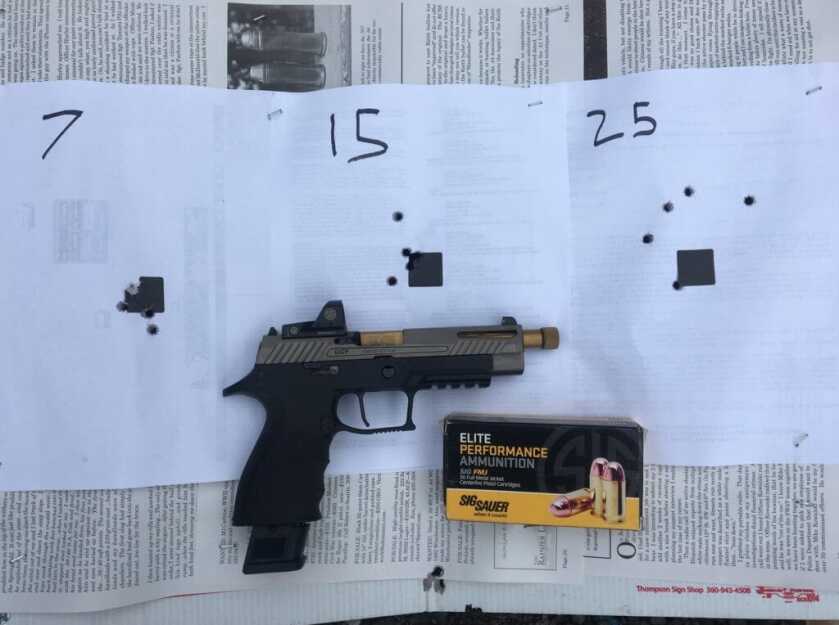
How are you going to hang your targets? If you are headed to an undeveloped range, you can run a couple of pieces of clotheslines and use clothespins to hold targets.
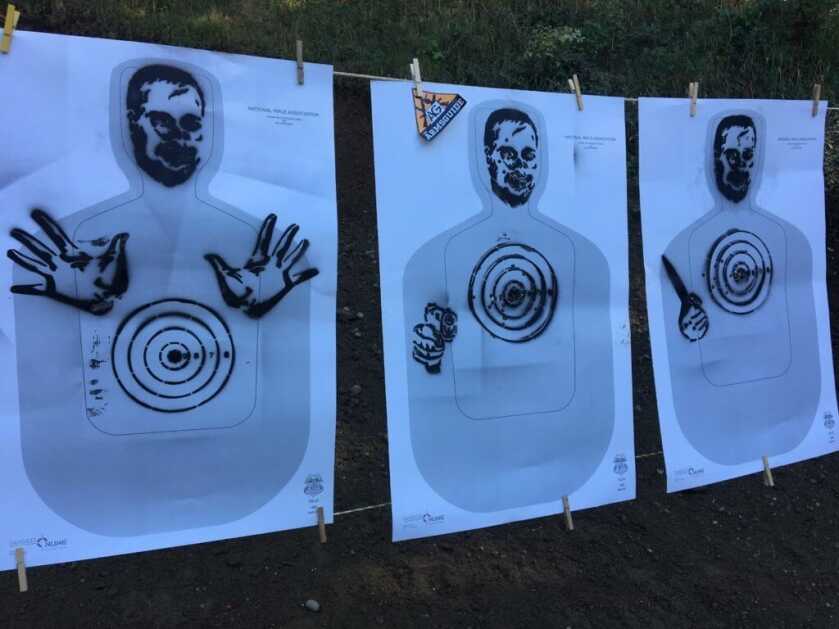
You can make simple target stands from PVC pipe. I prefer to use yard signs after elections and home sales. They are weather-proof, hold staples, stick to the tape and stand up in the ground. If the ground is too hard to drive in signs, a few wood screws will build a simple lightweight stand.
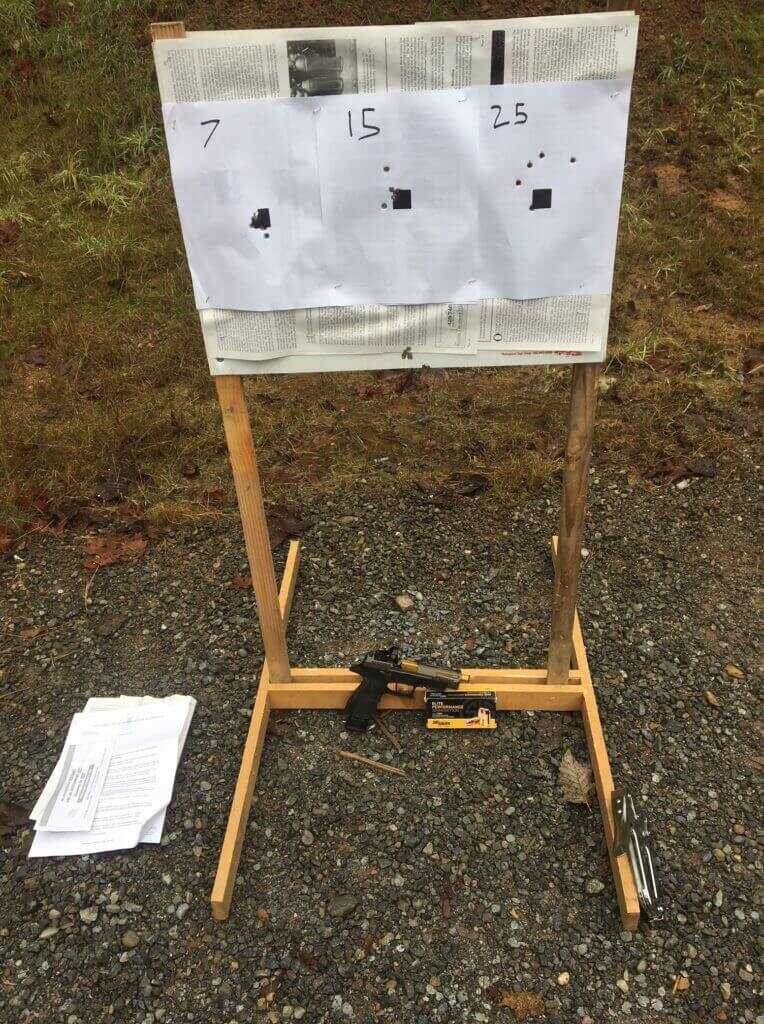
Reactive targets are fun but make sure your range allows what you want to shoot. Portable steel targets are great, but they are still heavy. There is no replacement for that clang which immediately induces a warm feeling all over.
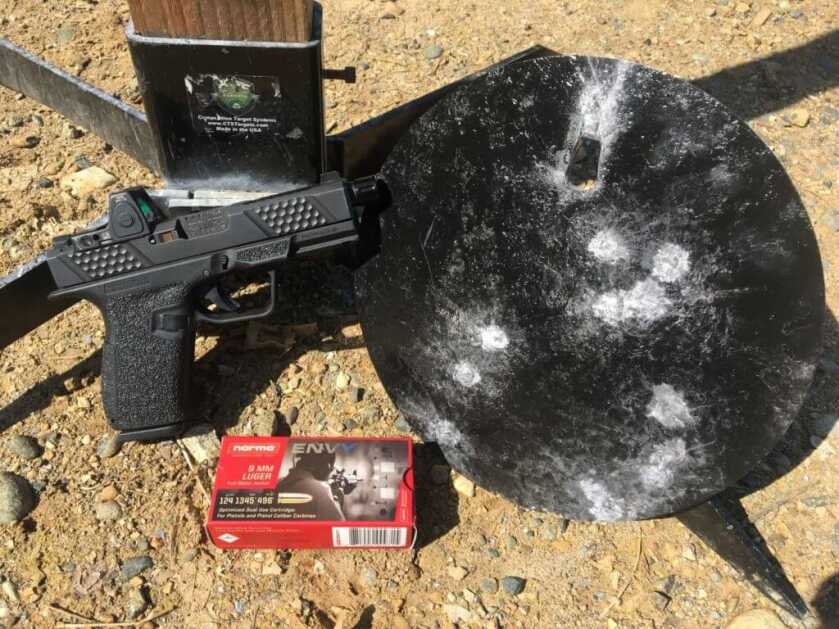
Can’t use steel? The thrift store is full of things you can shoot. Start with a cleanup plan. In undeveloped ranges in the country, I like to use food. Not wasting edible stuff, but overripe fruit, stale expired cookies, and crackers all make great targets, especially for kids with .22s. I pick up unbroken skeet at the shotgun range and carry them out to the rifle range.
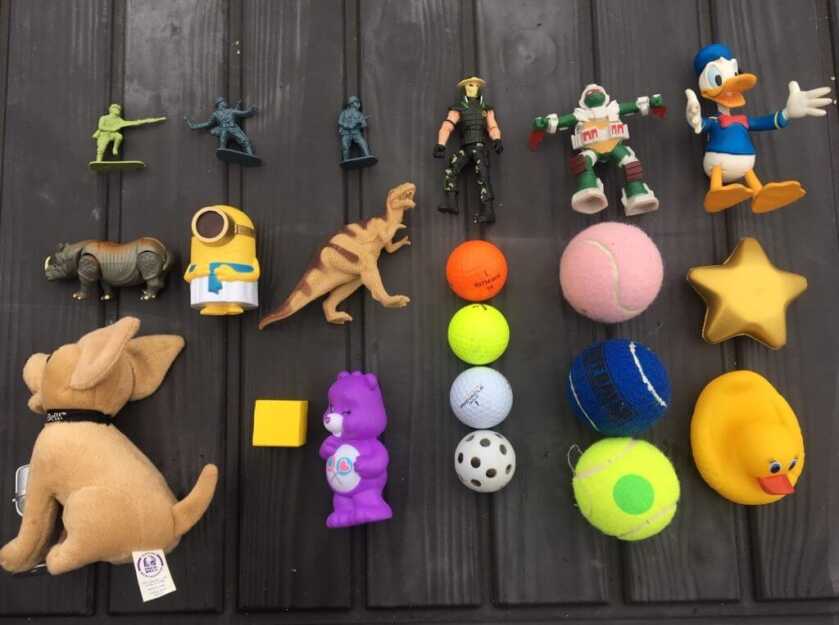
Just make sure you have a plan to clean up what you shoot if it isn’t biodegradable. Many public shooting areas have been closed because people shoot and abandon stuff like televisions, trash, and propane tanks. Please don’t be that guy. It is just as easy to keep it clean.
Things Which Allow You to Shoot Better
I always bring a tool bag. What is in it? All the things that I ever needed and didn’t have on prior range trips. There is a multi-tool, mostly used as a knife, basic screwdrivers, an Allen key set, brass hammer, sight adjustment tools, cleaning rod, small flashlight, duct tape, and oil.
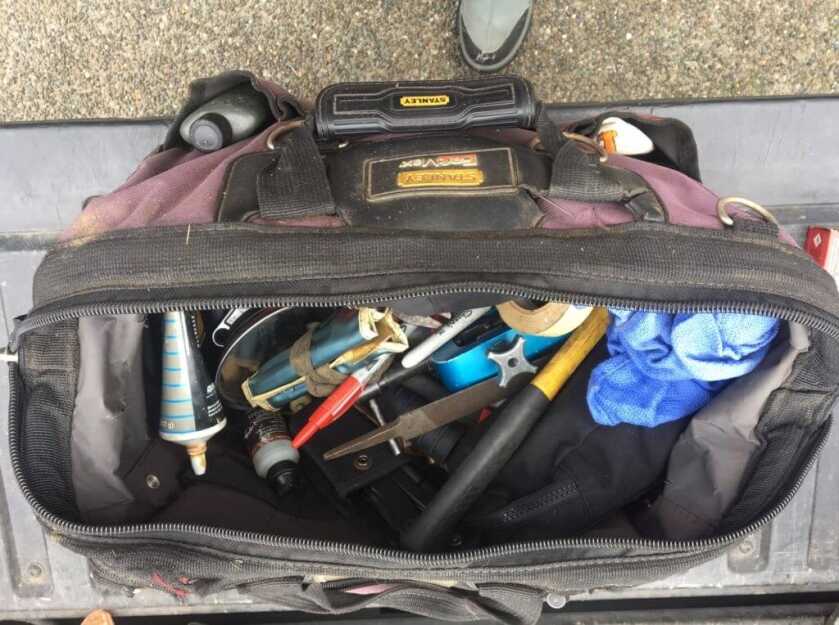
Probably the most used item is the oil. It never ceases to amaze me how many people overlook lubrication. “My gun is not working.” They will shoot until the gun will not cycle. Oil will frequently solve the problem. If you are the only shooter on the range with oil, you will be very popular.
There is nothing more frustrating than a gun that doesn’t hit where you aim. Sight adjustment tools and tools to adjust sights are pretty important. Some guns require a special tool (looking at you AK, UZI, and MP-5) to adjust sights. These tools are like a key to a lock. The sights are set at the factory and the sights are designed to PREVENT adjustment by the shooter.
I like sight pushers for handguns and have several of them for different models. Using red dots and scopes often require tiny screwdrivers or Allen keys. Most sights come with the tool needed for adjustment. I put it in the tool bag so I will bring it to the range.
The hammer and the cleaning rod are used to clear jams. I know what some of you are thinking, you should never use a hammer to fix a gun. When things get smashed at high energy, they often require substantial force to reverse entropy. The cleaning rod is the only thing that can clear a barrel. If there is a squib load, you will need the hammer too. The flashlight is used to see if you got everything out.
Things come loose, attached items are relocated or removed. You need the tools to make adjustments and minor repairs so that you can adjust your firearms for maximum efficiency and ergonomics.
Shooting mats, bipods, tripods, and shooting bags may come in handy if you need to shoot precisely. I have shot prone in mud and snow. It is much nicer with a mat. If you don’t want to spend a lot, an old sleeping pad or yoga mat will work fine. Shooting bags can be made from an old sock or the sewn up leg from a pair of pants with drawstrings in the cuffs.
Some people fill these with dried beans or rice. If you live somewhere it rains, you may want to go with weighted stuffing beads from the craft store. I would stay away from dirt.
Sandbags are useful for many things but a bag of dirt isn’t the best thing to rest a rifle on. Shot bags are handy but heavy to carry around. I put old golf balls in a kid’s backpack to weigh things down. They can always be repurposed into targets.
Safety and Protective Gear
Of course, you are going to have eye and hearing protection for everyone on the range. It amazes me that people shoot without glasses. Don’t gamble with your eyes; guns blow up, ricochets happen, a very minor injury can cost you your vision. They sell safety glasses that have magnified sections. These are great for working on guns. No matter how well you see, magnification lets you see better.
A hat with a brim will keep brass from getting behind your glasses. Long pants and sleeves protect from cuts and sunburn. Gloves make hot guns more manageable.
Water and snacks may not seem like safety gear, but you need to stay hydrated or you will suffer. A day at the range is much more fun if you have a snack and don’t skip a meal. Take food and drinks that you can seal up to keep them away from lead contamination. Bring wipes to clean your hands before you eat.
You can plan for the environment, but sometimes you get the unexpected. You should consider, rain gear, sunscreen, warm clothes, and/or insect repellant.
There are dangerous things at the range. You can get anything from a paper cut or a gunshot wound. Even if you are a model of safe behavior, someone next to you on the range may need help. You need a first aid kit with band-aids and a trauma kit to fix a gunshot wound. If you don’t know how to use them, get a friend who does. I suggest that everyone get some basic first aid training. Advanced training is available. Anyone who shoots should know how to treat penetrating trauma. Become the friend who knows what to do.
If you are shooting in a remote area, check your cell phone reception. If your phone doesn’t work, make sure you have some options to get help and get home. In an area with wildfire danger, you may want to pack a shovel in case you start a fire. Right after it starts, it is easy to put out. Wait a bit and you have a big problem.
Range Operations
If you are in a remote area, you have to establish a range. If you are alone, it is no big deal, but you still need to establish shooting positions, especially for drills. In a group or class, you need safe areas and firing points.

Depending on what kind of shooting you are doing, there is some other stuff that may come in handy. Binoculars or a spotting scope can save you a trip down to the target. Your cell phone camera is handy for collecting data on targets and videos of yourself shooting. You should consider loading apps for a ballistic calculator and a shot timer.
If you are in an undeveloped setting, plastic soccer cones can make yard lines or shooting positions. A shooting mat can make prone shooting more pleasant and shooting bags will keep your gun stable for a more accurate zero. You should bring a basic tool kit to tighten loose parts and sight adjustment tools to zero.
Clean Up
If you have the stuff, clean up is easy. I like to lay down a tarp where my brass lands. It can keep you out of the mud and I have used my tarp to cover me and my guns in an unexpected rainstorm. I prefer two 6′ x 10′ tarps to a larger single tarp. They are much easier to pack and are cheap enough to be disposable.
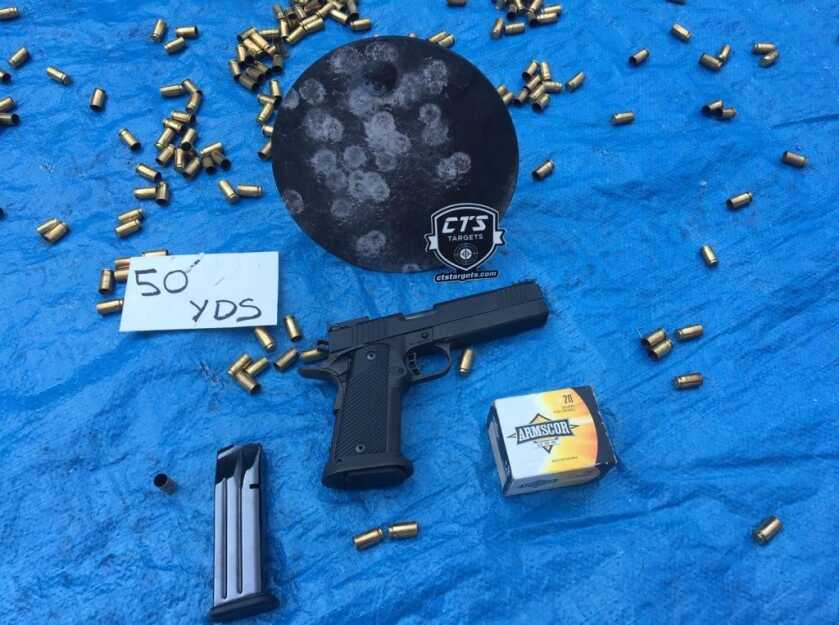
If I am shooting steel core ammo, a magnet grabs that stuff. A small rake can grab rifle brass and shotgun hulls and a dustpan picks it up.
Trash bags can do a lot of things like cover targets in the rain and make a raincoat. A five-gallon bucket can be a chair and hold your brass.

No matter where you shoot, a little preparation goes a long way. The more remote the range, the more critical planning becomes. In SF they told us that if you fail to plan, plan to fail. Spend your range time shooting and training. If you can get to BLM land or a rural shooting area, you can make your own range. Get out there and shoot.
Featured image by Mark Miller. Solid 100 yard hits with CMMG 10mm Resolute on the highly portable CTS Steel Target.


I am fortunate that I have a great place of my own to shoot. We, my grandson and I, have madr a picnic table and made use of some scrap metal from a bumper my son welded fot his business truck , just happens to be AR500 steel, how lucky for me into some good targets. Oh the sound of a hit, sweet. Hauling the necessary equipment to the home range still takes 2 trips but with the idea of the handcart it will get better. I really like the blue tarp too. We ate moving the location and eill be adding a shelter and new bench. Thanks for the great article and advice.
I made a checklist for everything I need. Now the only time I forget something is when I don’t use the checklist!
If you shoot black powder you need all of the above plus! I have gone to the range with the wrong size percussion caps. Try to find those at Walmart or the Range store.
If you shoot black powder you need all of the above plus! I have gone to the range with the wrong size percussion caps. Try to find those at Walmart or the Range store.
Pack up at least the day before to your not rushing to get done and get to the Range and it give you time to note shortages and thing about what your forgetting.
Break it up for rifle and handgun days. A shotgun can be added to either as scatter guns don’t require much more than ammo. Don’t be the guy that shoots one Lane and his gear fill two rear benches.
Cleaning rods, tips patches to clear obstructions or bad round powder in barrel.
A .22 handgun and rifle are alway good for warm ups of rusty skills and rotation to keep guns from getting too hot.
Carry targets in a cardboard poster tube or make one from PVC. Roll and simple string tie the Rool: easy in/out.
Carry Gun. When its time to change out carry ammo: take the gun “As-Is” since you last scheduled maintence (week(s), month(s)) as that’s the condition it would have been in if your life depended on it.
Trust is nice but don’t neglect the security of firearms. R.O. focuse on the Firing Line and to a lesser degree whats going on behind it.
Many shooters pack beyond overkill! Three range days of ammo, trigger scale, AR barrel nut wrench, torque wrenches, hammer and pin punch set! You should only need tool for ajustments and occasional tightening.
Buing clen rags for carbon/excess lube wipe down so you don’t foul gun cases. Also baby wipes: clean hands face before you ear/drink/smoke or dirty you vehicle.
If you need a hand truck to move your gear for a couple hours on the Range, you might want to review you absolute necessities AGAIN. LOL